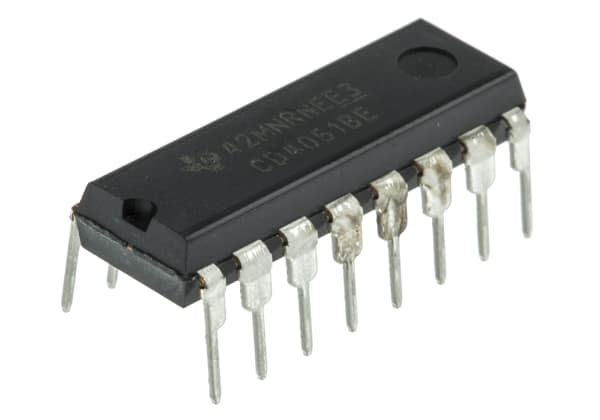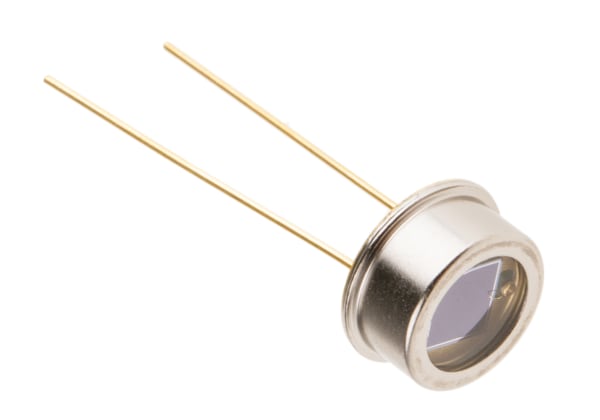- Published 14 Aug 2024
- Last Modified 16 Aug 2024
- 8 min
Guide to Computer Displays
Computer monitors come with a range of screen technologies including the VA, TN, and IPS types of LCD screens. This guide explores these types of computer displays and their differences.
Reviewed by Peter Kendall, Technical Support Engineer (July 2024)
When it comes to computers, what is a monitor and what does a monitor do? Monitors are the ‘TV’ screens that display what users access on computers. This guide explains the features to consider in computer displays and breaks down the IPS v VA v TN types of LCD monitors.
What is a Computer Display?
Just what is a computer monitor? It is the display screen that forms the user interface for the computer. It displays the information the user is accessing and represents the computer’s outputs in response to the user’s inputs.
What is a monitor used for? Monitors display anything computer users access: documents, websites, productivity tools, computer-aided design (CAD) programs, photo-editing programs, video games, films, and more.
Types of Computer Display
LCD Displays
What is an LCD monitor? Liquid crystal displays are one of the most common types of monitor. Their titular liquid crystal exists in a semi-liquid state and is very sensitive to temperature changes. Applying heat changes their molecular structure and ability to pass light through.
A modern LCD monitor has the following thin film layers (TFT) of features:
- Liquid Crystals: Arranged in a grid of pixels.
- 2x Electrodes: Sandwiching the crystals and selectively sending current through them using a row-column grid-control system.
- 2x Polarised Glass Layers: Oriented with their polarisation at 90° to each other. These ‘substrates’ sandwich the electrodes and let light through as the electrodes alter the crystals’ molecular structure to align with each glass piece’s polarisation.
- Colour Filter: A layer of subpixels that divide each crystal’s light into red, green, and blue. Careful voltage control of each one produces full colour displays.
- Backlight: Simple LCDs in clocks and watches have mirrors and merely control the reflection of ambient light. LCD monitors use LEDs to shine light through all these layers, which then control the intensity and colour of the light passing through.
VA Displays
What is a VA monitor? Vertical Alignment LCDs have pixels that align perpendicular to the screen’s sheets (‘vertical’ in the layer stack) in their resting state. When they receive current from the electrodes, they shift to allow light to pass through.
That straight resting alignment contributes to VA displays’ strong contrasts, letting them produce truer black backgrounds that contrast well with adjacent colours.
TN Displays
What is a TN monitor? Twisted nematic liquid crystals are one of the oldest LCD types, and they remain popular today for their high speed and low power consumption. In their ‘normally white’ resting state, the pixel molecules twist into a helix that aligns with the two substrates’ 90° shift in polarisation, allowing light through. Passing a current through the pixel breaks up this helix and blocks light, as with a number’s single ‘dark’ portion on a classic, basic digital clock.
Modern TN displays have extremely fast response times and refresh rates, meaning reduced image blurring and near-instant responses to user inputs. This makes them the monitor of choice for competitive video gamers who need lightning-fast performance. Those gamers will also sit directly in front of their monitors and can accept lower colour accuracy, though; TN displays tend to have limited viewing angles and colour ranges compared to IPS.
IPS Displays
What is an IPS monitor? With in-plane switching LCDs, the crystals sit parallel to the screen’s layers in their default state, and they rotate rather than twist to let light through.
These crystals’ vertical (in the layer stack) active state gives IPS displays wide viewing angles, letting more people in the room see them. IPS monitors also have sharp colour accuracy, making them good choices for creative professionals who need the most true-to-life displays.
IPS vs VA
How do VA panel vs IPS panel specs differ? Though they’re both enduring, common display styles, VA vs IPS monitors are different in terms of speeds, contrasts, and viewing angles.
IPS displays can be more expensive, but they excel in their speeds and colour capabilities. IPS also has wider viewing angles, meaning it’s easier for people to see the display from wherever they are in the room.
VA displays have better contrast ratios, meaning lighter whites and darker blacks. This gives more immersive gaming and movie-watching experiences but is less important for professional situations (other than for the creatives making that media). VA screens can also have inferior colour accuracy and ranges, but these days their colours suffice for all but professional photo editors.
When considering VA vs IPS displays, think about their operating environment, the work they’ll be used for, and their cost. Monitors for industrial shop floors won’t need photorealistic, immersive colours and contrasts, but they could require large viewing angles for their wide, open environments. Professional designers should seek the colour capabilities of IPS, and people working with video may also prefer IPS vs VA for its faster speeds.
IPS vs TN
As noted above, TN vs IPS differences start with their speed. TN displays have far superior response times and refresh rates. Hardcore gamers demand 60 Hz (the image refreshed up to 60 times per second) as a baseline, and TN displays can get up to 540 Hz. These monitors reduce motion blur and the lag between user input and the results onscreen. TN monitors also deliver these advantages at fairly affordable prices with high energy efficiency.
IPS monitors are the better choice for most professional situations, though. They outperform TN displays in their viewing angles and colour accuracy, which makes them better suited for producing creative works and working in teams or open areas.
Laptop Displays
Laptops spearheaded the development of flatscreen computer displays out of necessity: bulky cathode ray tube screens would never have worked for the flat profiles of laptops. These days, laptop displays can be just as powerful and impressive as their desktop counterparts. Along with VA, TN, and IPS LCD screens, laptops also come with OLED and mini-LED screens.
Organic light-emitting diodes (OLEDs) use carbon-based materials to achieve improved image brightness, contrast, and colour ranges. Since these screens don’t require a backlight, they can be made very thin: an ideal feature for laptops.
Mini-LED screens are similar to standard IPS LCD screens, but they use smaller, more numerous LEDs for their backlighting. This means greater image control and contrast, allowing darker blacks and lighter whites.
Screen size, resolution, and aspect ratio are key factors when selecting laptops since they directly determine the computer’s size, weight, and how things will be displayed. 720p resolution may be adequate if you prefer a smaller screen and lighter laptop since high definition may have no appreciable effect in a small display. As for aspect ratio, 3:2 laptops can be perfectly suited for working with basic documents, but using one to watch videos at a 16:9 ratio will mean large black bars at the top and bottom.
You should also consider whether you need touch capabilities for your screen. Hybrid laptop-tablets are a popular choice that provides high screen performance and the touch controls we expect from our smartphones.
How to Choose a Computer Display
- Screen Size: Measured by the length of the screen’s diagonal, though it’s often rounded up or down, e.g., 17.3-inch = 17-inch.
- Resolution: This count of rows of pixels typically starts at 1080p, except for budget 720p laptops, and goes up to 4K ultra-HD.
- Aspect Ratio: This compares the screen’s width and height. It’s usually 16:9 or 16:10 for widescreen monitors. Other choices include 3:2 for compact laptops and the ultrawide 21:9 for high-end users.
- Contrast: This specification has been notoriously overblown in marketing. Contrasts noted as ‘static’ (such as 1,000:1) reasonably indicate how well the monitor produces extreme whites and blacks, but claims of 1,000,000:1 dynamic contrast give no real useful information.
- Refresh Rate: Measured in Hz (times per second), this indicates how fast the screen can supply new image frames. 60 Hz is acceptable for most professional scenarios.
- Response Time: This indicates how fast (in milliseconds, ms) one frame can change into the next one.
- Colour Gamut: This shows the percentage of a conventional colour palette (such as sRGB) the screen can display.
- Brightness: This indicates how easily a laptop can be read outdoors, for example. It’s in units of cd/m², or ‘nits.’
- Speakers: Monitors can now meet both audio and video needs.
Future of Computer Display Screen Technology
As the centre stage for the computer, displays continue to be one of the fastest-developing areas of technology. The bendability of OLED displays allows innovations like curved, ultrawide monitors that give the user an immensely immersive experience. OLED technology has further potential in screens embedded in car windows or even foldable screens that could be rolled up like paper.
Another emerging feature is HDR: High Dynamic Range technology boosts the monitor’s contrast and colour capabilities, though only with HDR-enabled computers and HDR-supported content.
RS has displays for all your screen needs, as well as computing peripherals to complete your workstation.



